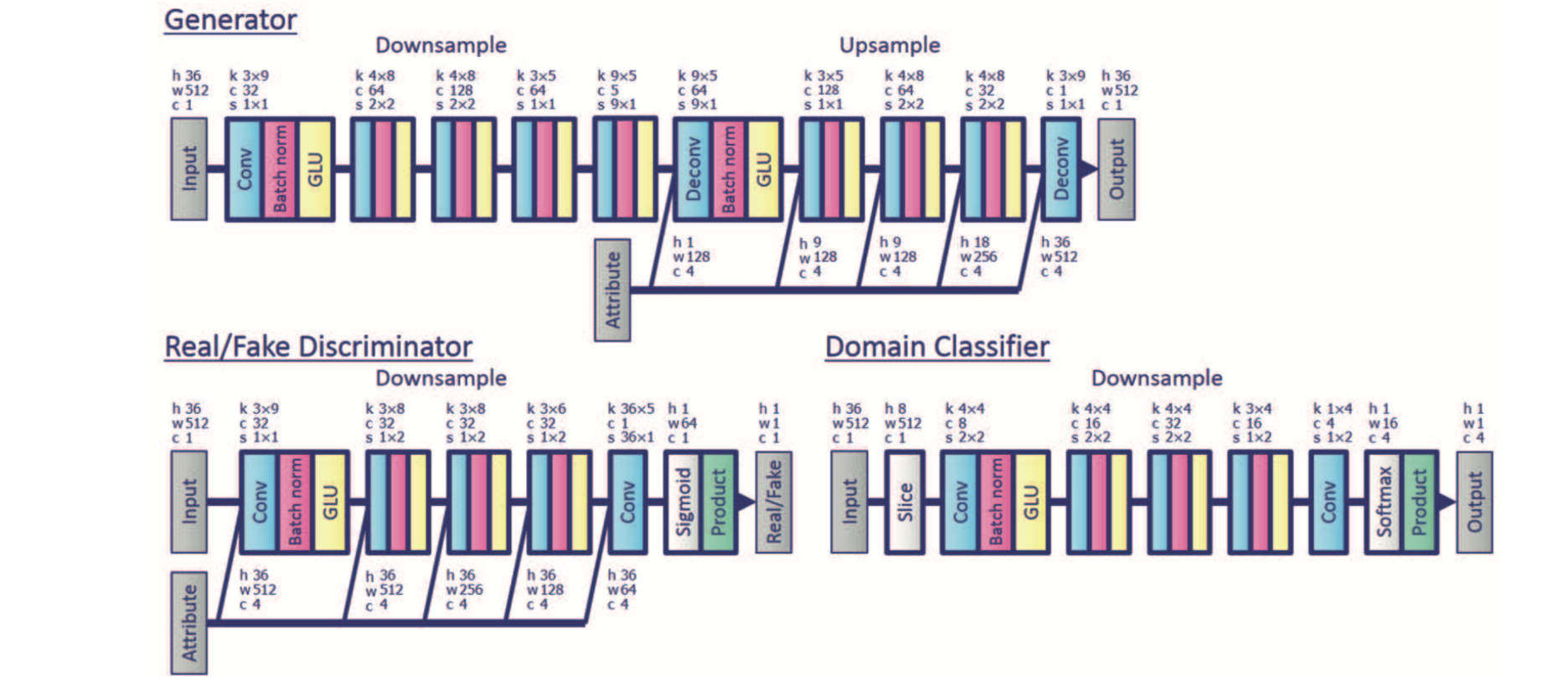hujinsen / Stargan Voice Conversion
Programming Languages
Labels
StarGAN Voice Conversion
This is a tensorflow implementation of the paper: StarGAN-VC: Non-parallel many-to-many voice conversion with star generative adversarial networks.
The converted voice examples are in converted directory
Dependencies
- Python 3.6 (or higher)
- tensorflow 1.8
- librosa
- pyworld
- tensorboard
- scikit-learn
NOTE:According to some feedbacks, we recommend to use tensorflow version 1.8 exactly. (Tensorflow 1.11 generate nonsense results)
Usage
Download dataset
Download the vcc 2016 dataset to the current directory and create train directory and test directory.
python download.py --datasets vcc2016 --train_dir ./data/fourspeakers --test_dir ./data/fourspeakers_test
For simplicity use:
python download.py
The downloaded zip files are extracted to ./data/vcc2016_training and ./data/evaluation_all.
-
training set: In the experiment, we choose four speakers from
./data/vcc2016_training. We move the corresponding folder(eg. SF1,SF2,TM1,TM2 ) to./data/fourspeakers. -
testing set In the experiment, we choose four speakers from
./data/evaluation_all. We move the corresponding folder(eg. SF1,SF2,TM1,TM2 ) to./data/fourspeakers_test.
The data directory now looks like this:
data
├── fourspeakers (training set)
│ ├── SF1
│ ├── SF2
│ ├── TM1
│ └── TM2
├── fourspeakers_test (testing set)
│ ├── SF1
│ ├── SF2
│ ├── TM1
│ └── TM2
├── vcc2016_training (vcc 2016 training set)
│ ├── ...
├── evaluation_all (vcc 2016 evaluation set, we use it as testing set)
│ ├── ...
Preprocess dataset
Extract features (mcep, f0, ap) from each speech clip. The features are stored as npy files. We also calculate the statistical characteristics for each speaker.
python preprocess.py --input_dir ./data/fourspeakers --output_dir ./data/processed --ispad True
For simplicity use:
python preprocess.py
This process may take a few minutes !
Note that test set doesn’t need preprocess.
Train
Read npy files from processed_dir to train model and raw wav files fromtest_wav_dir to randomly generate some samples using the model during training.
python train.py --processed_dir ./data/processed --test_wav_dir ./data/fourspeakers_test
For simplicity use:
python train.py
Convert
Restore model from model_dir, convert source_speaker’s speech to target_speaker’s speech. The results are strored in ./converted_voices
python convert.py --model_dir ./your_model_dir --source_speaker SF1 --target_speaker TM1
Summary
The network structure shown as follows:
Note: Our implementation follows the original paper’s network structure, while pytorch StarGAN-VC code‘network is different from the paper as it’s classifier shares the Discriminator’s weights. Both ways generate good converted speeches.
Reference
If you feel this repo is good, please star !
Your encouragement is my biggest motivation!

